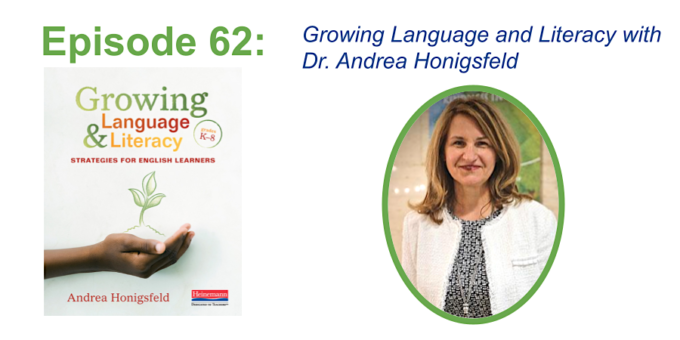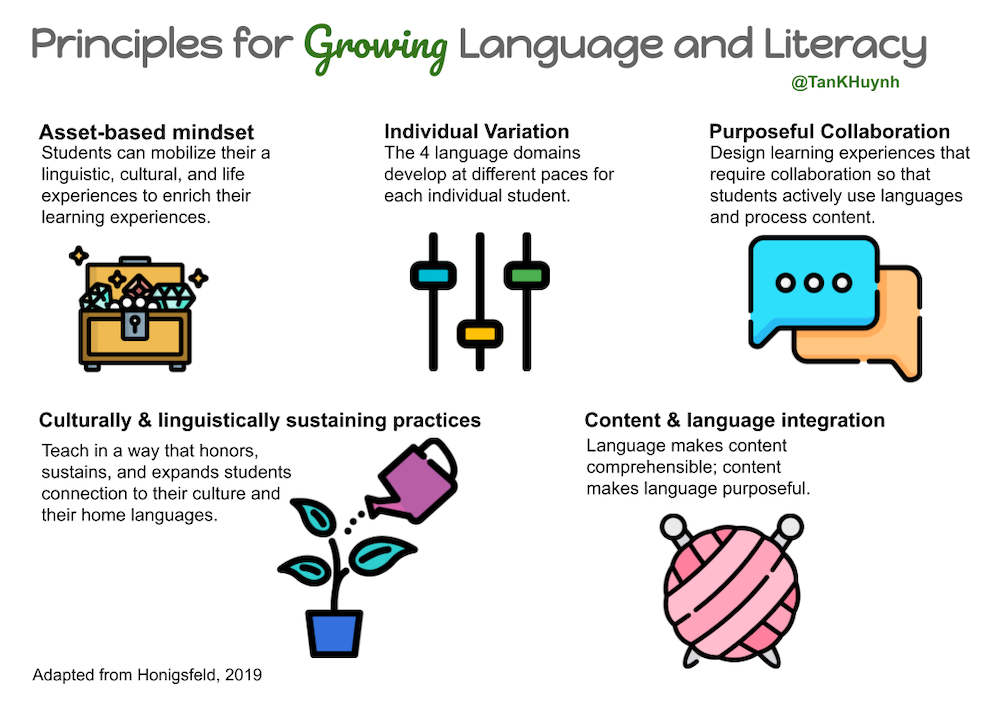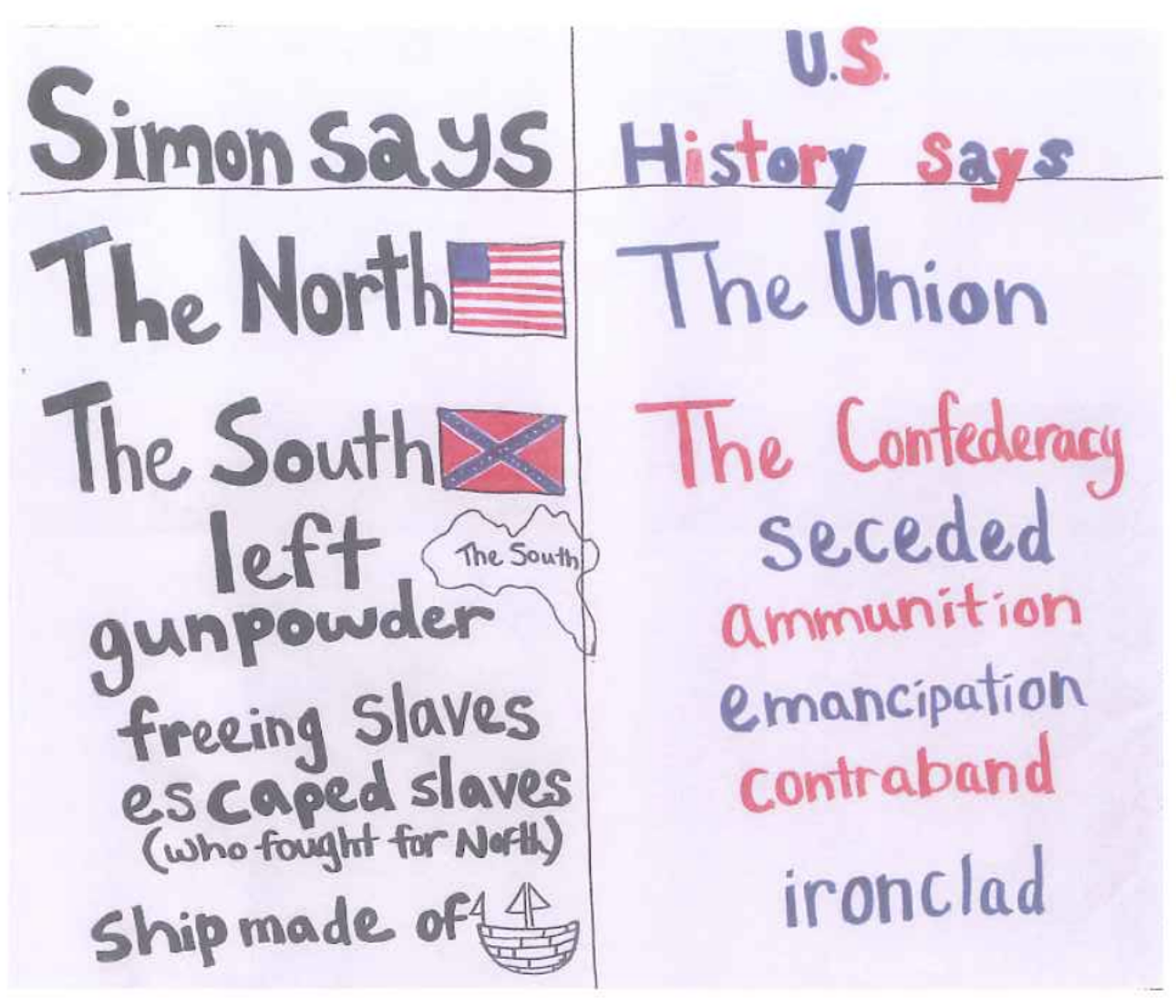5 Principles Can Help Us Support Our Language Learners
A MiddleWeb Blog
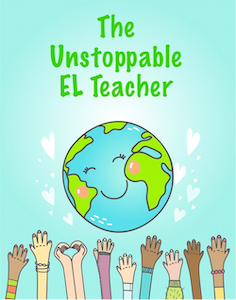 In this post I want to share some highlights from an essential resource for language specialists and teachers working with language learners on a daily basis.
In this post I want to share some highlights from an essential resource for language specialists and teachers working with language learners on a daily basis.
Dr. Andrea Honigsfeld, a prolific writer, renowned scholar, and leader in the language literacy field, was invited by Heinemann to produce a book.
They saw her as a scholar practitioner grounded in theory yet with established connections to educators in the field who are working diligently to grow students’ language and literacy skills.
The invitation was to produce a special teacher-friendly book with 125 full-color illustrations to help educators understand the different language proficiencies and to offer specific strategies for each level. To our benefit, Andrea accepted the invitation to write Growing Language and Literacy: Strategies for English Learners. (Heinemann, 2019) Click to hear my interview with Andrea, below.
A theoretical foundation for the book
The book starts off with explaining the 5 evidence-based principles of language development and acquisition. Andrea begins the book with these principles to lay the foundation for the strategies. The five principles are:
1. Asset-based mindset
The belief that students and their families have much to offer through their home languages, cultures, and lived experiences. Approach instruction with a lens for what students can do, rather than what they cannot do yet.
2. Individual variation
The understanding that students’ development is unique to the individual. The four domains of language (e.g. reading, writing, speaking, listening) will bloom and mature at different paces.
3. Content, language, and literacy integration
Content, language, and literacy must be integrated with one another like wool woven into a sweater. Students learn language by engaging with the content, and having students apply content-based skills and knowledge provides a purpose to use literacy skills (Heritage, Linquanti, and Walqui, 2015).
4. Culturally and linguistically sustaining practices
The price of inclusion in a new community should not be at the expense of one’s cultural and linguistic heritage. We must examine how we design instruction and assessments in a way that honors students’ connection to their culture and expands students’ home language proficiency (Paris, 2012; Ladson-Billing 2011).
5. Purposeful integration and collaboration
Engineer instruction so that students collaborate with each other and are taught explicitly how to interact with others. Through group work, students will better process the content and strengthen their linguistic skills.
Format of the book
The initial framework chapter are followed by five specific chapters. Each chapter is focused on sharing strategies that would develop the four language domains for students at that particular language proficiency. Each chapter contains these subsections:
- What can we learn from research?
- What can [students at a particular language proficiency] do?
- What practices support [students at a particular language proficiency]?
- When are [students at a particular language proficiency] ready to move on?
Included in each section are many helpful examples from teachers who share how they are supporting their language learners with a particular proficiency.
Because Andrea gathered so many wonderful examples that illustrate how teachers can grow students’ language and literacy skills, I asked her what she thought needed highlighting in the planned podcast she agreed to record with me.
One strategy she mentioned was the portraiture free-writing activity from teacher Alex Wolf. In this assignment, Alex had students write about themselves as a person so that teachers could better understand what assets students bring to the class.
The first step is to have students create a simple self-portrait. Then they use the lines of the portrait as the lines to write about themselves in the free write (see below). Furthermore, students are encouraged to use their home language in their writing to further cement support for a student’s culture and linguistic assets.
In the following example, a particular eighth grader used French to compose the freewrite.
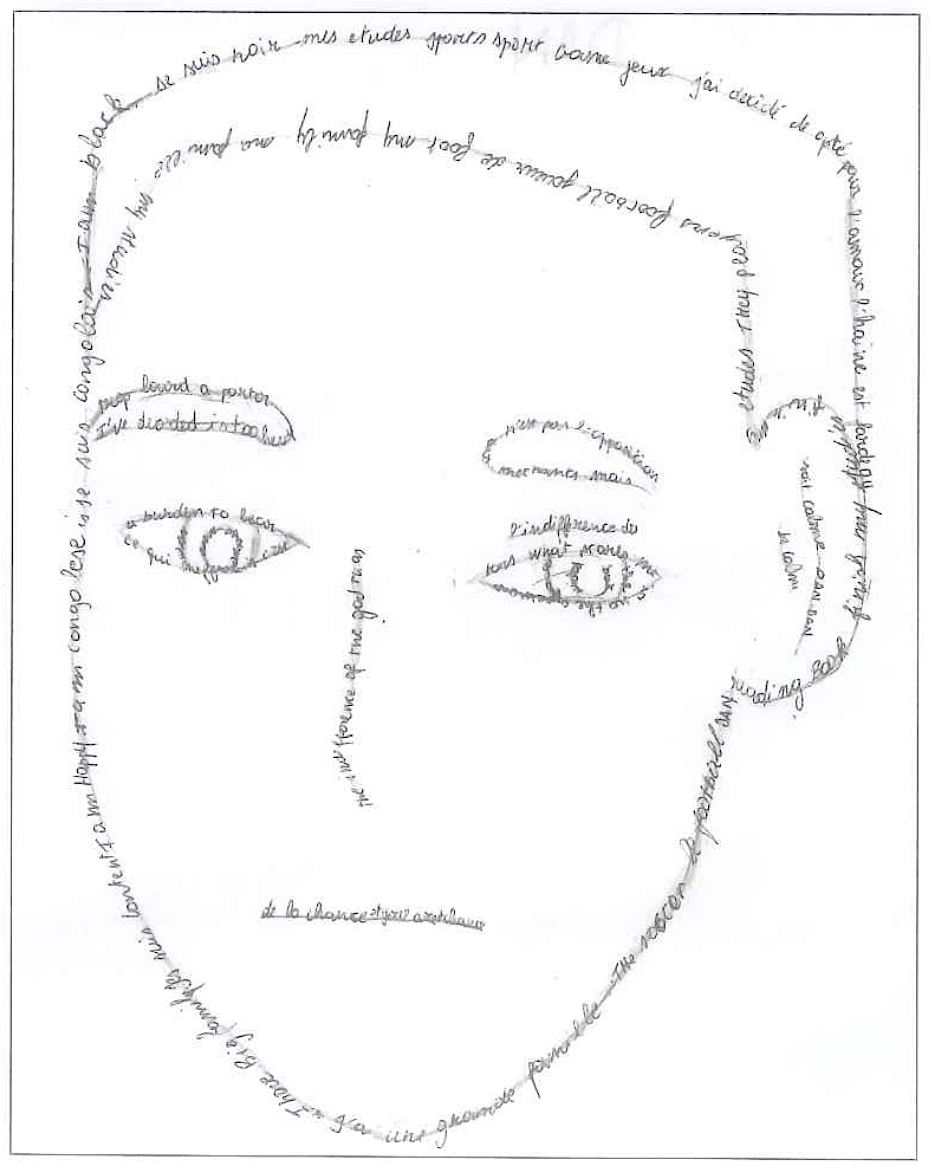
With this strategy, students learn the content-specific words they need to learn for the discipline-specific class.
The Red Thread
I sometimes ask authors this question: What is the red thread that connects every chapter of your book? When I asked Andrea this, she said celebration. This book is a celebration of the near-miracle of what teachers and students can do when they believe that success is possible for language learners.
Drawing on Andrea’s book – with its five principles of growing language and literacy and the many strategies shared by teachers around the world – I am sure you and your students will experience levels of learning worthy of a major celebration!
Answer in the comments: Which of the five principles resonated most with you and why?
References
Heritage, M., R. Linquanti, and A. Walqui. 2015 English Language Learners and the News Standards: Developing Language, Content Knowledge, and Analytical Practices in the Classroom. Cambridge, MA: Harvard Education Press.
Honigsfeld, Andrea. 2019. Growing Language and Literacy: Strategies for English Learners. Portsmouth, NH: Heinemann.
Ladson-Billing, G. 2011. “But That’s Just Good Teaching! The Case for Culturally Relevant Pedagogy.” In Thinking About Schools: A Foundations of Education Reader, edited by E. B. Hilty, 107-116. Boulder, CO. Westview Press.
Paris, D. 2012. “Culturally Sustaining Pedagogy: A Needed Change in Stance, Terminology, and Practice.” Educational Researcher 41: 93-97.

